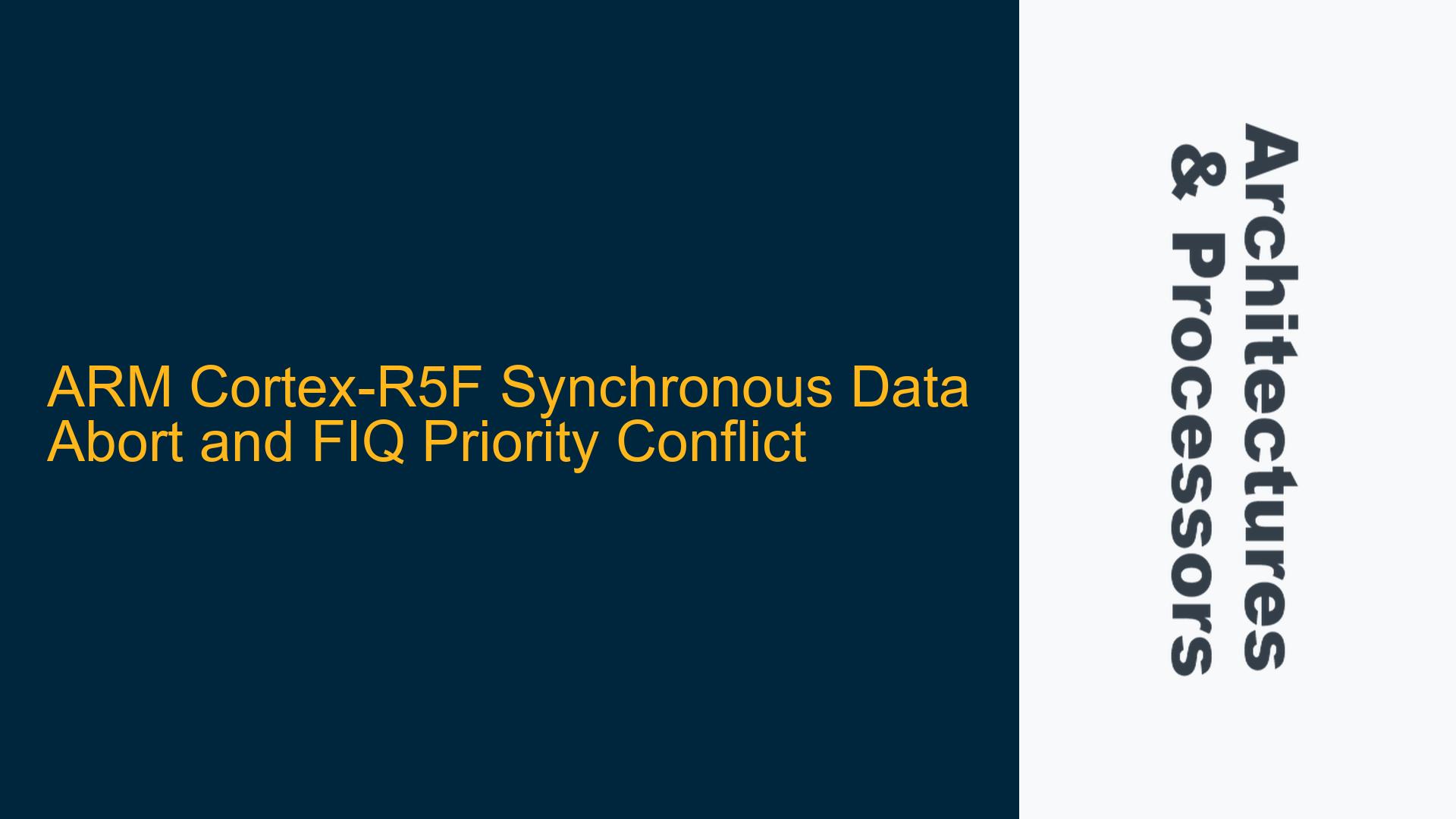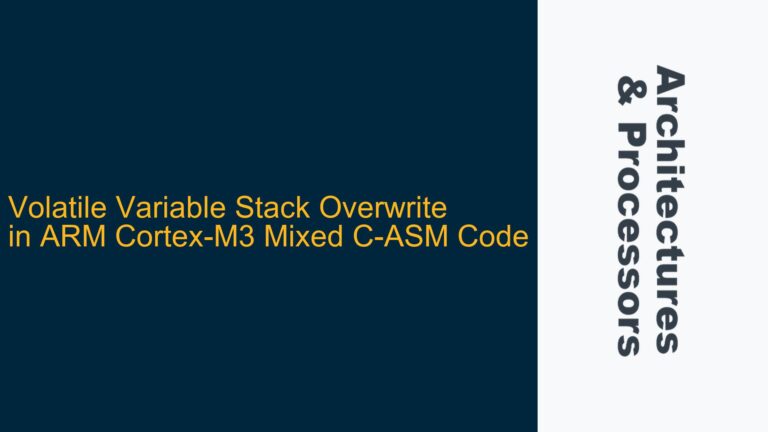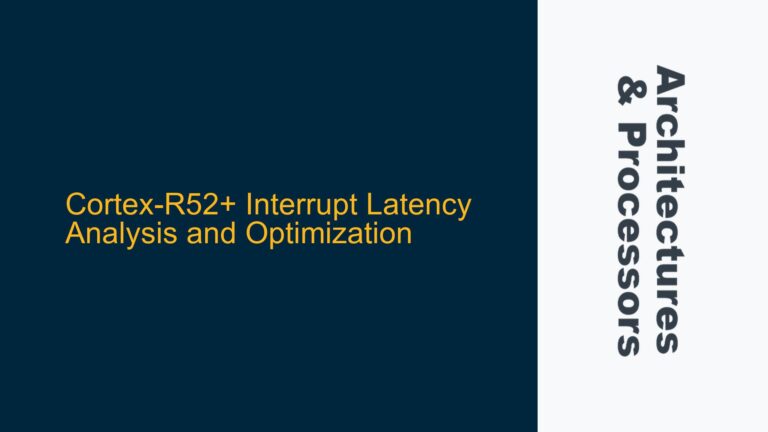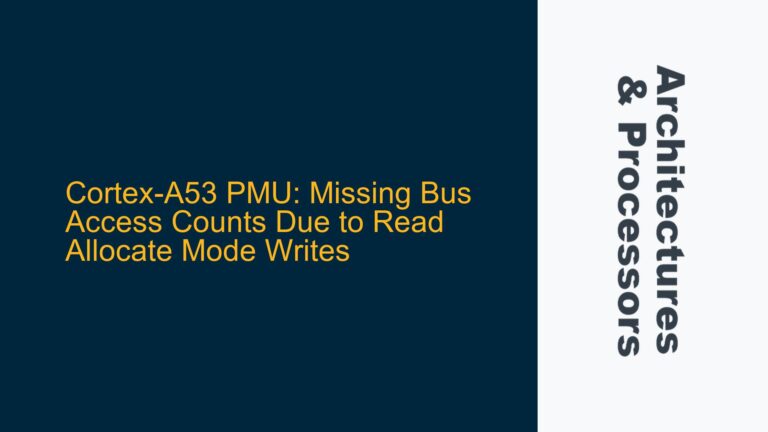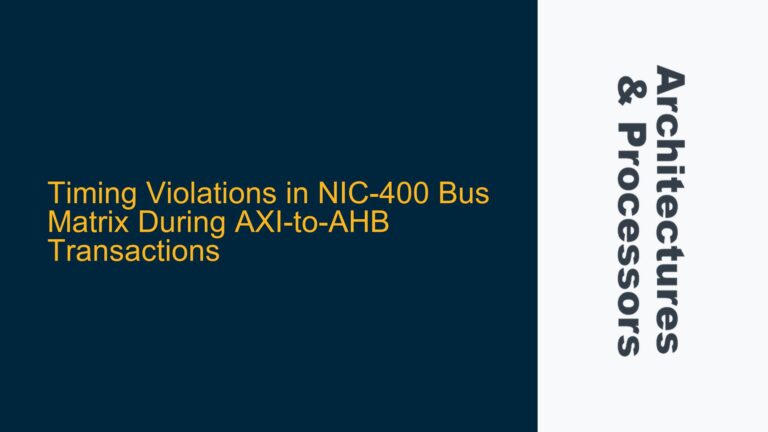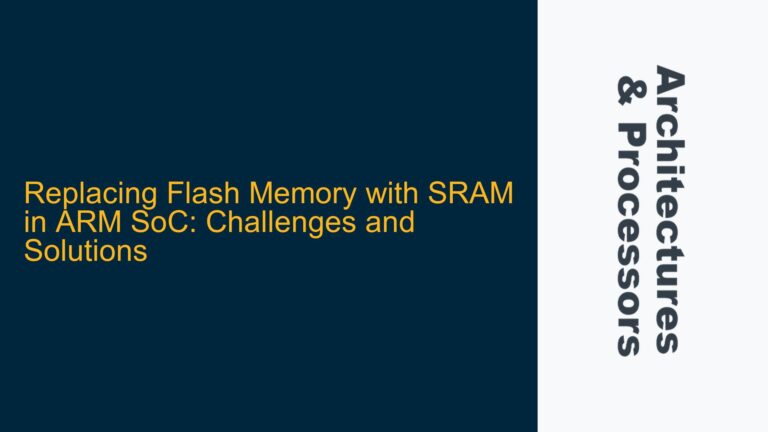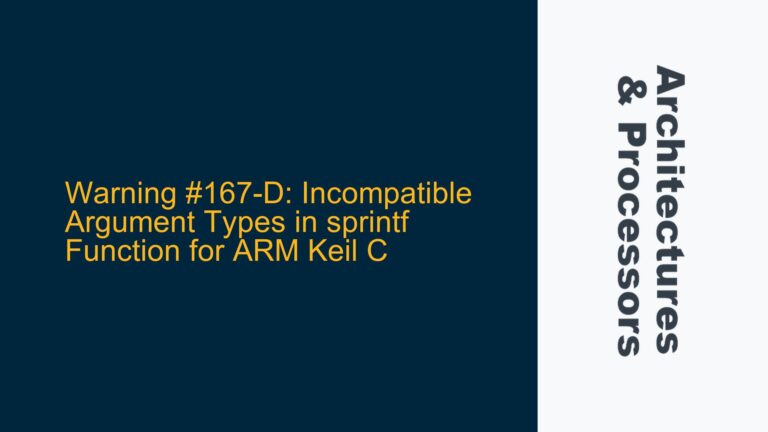Synchronous Data Abort and FIQ Timing in Cortex-R5F Memory Access
In the ARM Cortex-R5F processor, a scenario can arise where a memory access operation, such as a read from L2 memory, triggers both a synchronous data abort and a Fast Interrupt Request (FIQ) nearly simultaneously. This situation is particularly observed when the memory subsystem is in a test mode, leading to corrupted parity bits during the read operation. The core issue here is understanding the priority and timing relationship between these two exceptions: the synchronous data abort, which is a precise exception triggered by an invalid memory access, and the FIQ, which is an asynchronous exception typically used for high-priority interrupt handling.
The synchronous data abort is generated when the processor attempts to access an invalid memory location or encounters a memory protection fault. This exception is precise, meaning it is raised at the exact instruction that caused the fault. On the other hand, the FIQ is an asynchronous exception that can be triggered by external hardware events and is designed to have minimal latency. The Cortex-R5F processor must resolve the contention between these two exceptions when they occur simultaneously or nearly simultaneously.
The ARMv7-A/R Architecture Reference Manual specifies that the prioritization of asynchronous exceptions (like FIQ) relative to synchronous exceptions (like data abort) is implementation-defined. This means the exact behavior depends on the specific implementation of the Cortex-R5F processor and its interaction with the memory subsystem and interrupt controller. In practice, the timing of these exceptions is influenced by factors such as the pipeline stage at which the memory access is performed, the latency introduced by the interrupt controller, and the speculative nature of memory accesses in the Cortex-R5F.
Speculative Memory Access and Interrupt Latency Effects
The Cortex-R5F processor employs speculative execution for memory accesses marked as Normal memory. This means that the processor may initiate a memory read operation before the corresponding load instruction is committed in the pipeline. If an error occurs during this speculative access, such as a parity error due to the memory being in test mode, the processor may generate a synchronous data abort. However, the abort is only raised when the load instruction is committed, not during the speculative phase.
Simultaneously, if an FIQ is generated by the memory subsystem or an external interrupt controller due to the same error condition, the FIQ signal must traverse the interrupt controller and reach the processor core. The latency introduced by the interrupt controller and the asynchronous nature of the FIQ mean that the FIQ may arrive at the processor core before the load instruction is committed. If the FIQ arrives early enough, the processor may take the FIQ exception before the synchronous data abort is raised.
The key insight here is that the FIQ, being asynchronous, can preempt the execution flow before the load instruction is committed. When the FIQ is taken, the processor saves the return address (LR_fiq) to the instruction that would have been executed next. In this case, the return address points to the load instruction itself, indicating that the load had not yet been committed when the FIQ was taken. This behavior aligns with the speculative nature of the memory access, where the processor defers raising the synchronous data abort until the load instruction is committed.
Implementing Exception Handling and Debugging Strategies
To address the priority conflict between synchronous data abort and FIQ in the Cortex-R5F, developers must implement robust exception handling and debugging strategies. The first step is to ensure that the FIQ handler is designed to handle potential memory access errors gracefully. This includes checking the status of the memory subsystem and determining whether the FIQ was triggered by a parity error or another fault condition.
In the FIQ handler, developers can inspect the DFSR (Data Fault Status Register) to determine if a synchronous data abort was also triggered. If the DFSR indicates a synchronous external abort, the handler can take appropriate corrective actions, such as resetting the memory subsystem or logging the error for further analysis. Additionally, the handler should ensure that the load instruction that triggered the error is not re-executed, as this could lead to a loop of exceptions.
Debugging this issue requires careful analysis of the processor’s pipeline behavior and the timing of exception signals. Developers can use hardware breakpoints to monitor the execution of both the FIQ handler and the data abort handler. By setting breakpoints on the entry points of these handlers, developers can observe the order in which exceptions are taken and verify whether the FIQ is preempting the synchronous data abort.
Another useful technique is to simulate the error condition in a controlled environment. By forcing the memory subsystem into test mode and injecting parity errors, developers can reproduce the scenario and observe the processor’s behavior. This approach allows for detailed analysis of the timing relationship between the FIQ and synchronous data abort, helping to identify any potential issues in the exception handling logic.
In conclusion, the priority conflict between synchronous data abort and FIQ in the ARM Cortex-R5F is a complex issue that requires a deep understanding of the processor’s pipeline behavior, speculative memory access, and interrupt handling mechanisms. By implementing robust exception handling strategies and employing detailed debugging techniques, developers can ensure reliable operation of their embedded systems even in the presence of memory access errors.
